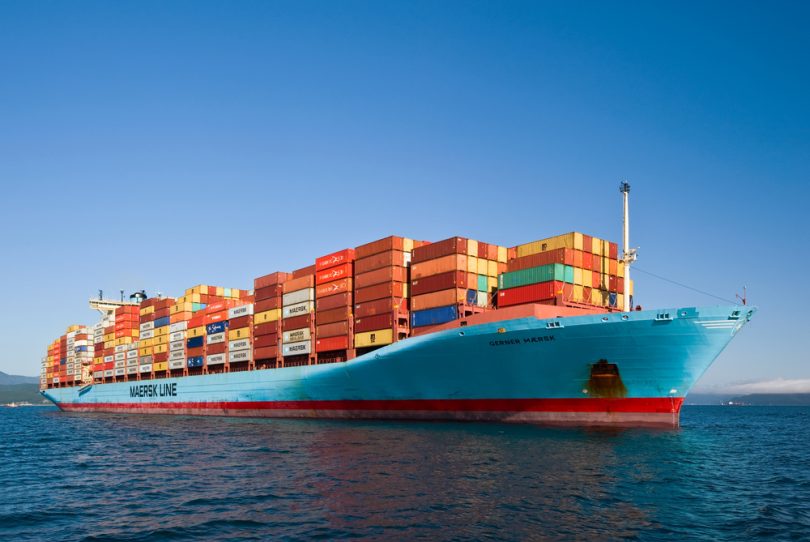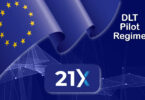Today Maersk and IBM announced their jointly developed supply chain blockchain project is called TradeLens. 94 organizations have agreed to participate in the platform as early adopters. Some of these organizations are actively involved in other blockchain initiatives.
The twelve-month trial involved identifying ways to reduce delays and documentation errors. During the period, the platform captured more than 154 million shipping events. The outcome is a permissioned blockchain that provides a single view of a transaction between all parties but maintains appropriate confidentiality.
In addition to tracking documents, the platform has IoT and sensor data to measure temperature control, container weight and other aspects.
The ecosystem of organizations includes twenty port and terminal operators and two more container companies, Maersk-owned Hamburg Süd and Pacific International Lines. Plus five customs authorities and several freight forwarders are participating.
Maersk and IBM said there are ongoing standards discussions with openshipping.org and they are working on aligning the TradeLens APIs with UN/CEFACT standards.
“We believe blockchain can play an important role in digitizing global shipping, an area of the global economy that moves four trillion dollars of goods every year. However, success with the technology rests on a single factor – bringing the entire ecosystem together around a common approach that benefits all participants equally,” said Bridget van Kralingen, senior vice president, IBM Global Industries, Solutions and Blockchain.
Currently, the TradeLens solution is available through the Early Adopter Program. The full commercial launch will happen by year’s end.
No joint venture
The initiative started out as a collaboration between IBM and Maersk with the intention of forming a joint venture (JV). The statement says “based on feedback from various members of the global supply chain ecosystem who would like to adopt the technology” they instead plan to maintain the relationship as a collaboration.
There could be additional reasons. For example, with two major players in separate sectors, a joint venture will require regulatory approval. That will take a lot of time. The strategy is for these two market leaders to set standards and use their market positions to create a lead. If they succeed, this platform could dominate the trade sector. If they wait they may lose their advantage.
Three months ago in a speech before the US Congress, Mike White, head of global trade digitization for Maersk said : “In January of this year Maersk and IBM announced our intention, subject to receipt of all applicable regulatory approvals, to form a joint venture to implement this global platform.”
The pricing hasn’t been announced. But the website differentiates between the Network (IBM Cloud), the platform (the core software), and applications. If charging mirrors the same structure, then IBM could take the bigger slice of revenue. There’s a chance the hosting aspect was always going to be outside of the relationship.
Avoiding a JV could have another benefit. What if Maersk’s involvement becomes the primary obstacle preventing other container companies joining? Without a JV it will be much easier for IBM to come to an arrangement with Maersk to cede its leadership role.
Not a consortium
There are very different views on the governance of industry blockchains.
One perspective is that market leaders should move quickly, set standards, and thereby extend their market lead. Hence, these dominant players get to own a large chunk of the industry infrastructure. As in the case of TradeLens.
Another view is that there needs to be a consortium with numerous players. This allows for wider collaboration and more of a sense of involvement. Not just at the start, but in the governance once the system is running and matures. This is why Goldman Sachs and JP Morgan dropped out of the R3 Consortium. They weren’t comfortable in a non-leadership position.
And there’s a third one. That’s if the software that’s created through these initiatives is open sourced. This isn’t referring to the blockchain protocol like Hyperledger Fabric in this case, which is already open source. What if the TradeLens software were open sourced? After all everything that goes into the blockchain application is the shared industry infrastructure. At a recent TechCrunch conference Brian Behlendorf, Hyperledger’s Executive DIrector said: “We’ll see a library to do trade finance, a library to do health care records.”
And he’s right. Perhaps not tomorrow but that’s the likely end game.
Talking to companies in various industries, the topic of open source comes up surprisingly often. Companies need the ability to customize software. That’s not an optional extra. They don’t want to wait in line to have features added, they want to do it themselves. It’s an even bigger issue if a competitor gets to decide their position in the queue for new feature requests.
However, TradeLens plans to have an appstore type of environment. So provided the base layer is ok, companies or software providers can create custom applications.
Competing initiatives
Twenty port authorities and terminal operators have signed up to TradeLens. First on the list was PSA that runs the Port of Singapore which is involved in another blockchain project.
PSA is a major player and runs several terminals in China and across Asia and Europe. They indirectly own 45% of the Open Trade Blockchain (OTB) platform that went live three weeks ago. The platform’s aims and functionality are very similar to TradeLens. Several other trade systems in the region have already integrated with the GeTS system of which OTB is a part.
It still makes sense for PSA to be part of TradeLens. Because they don’t have a global footprint, some cargo coming through their terminals will use TradeLens.
But this also means that terminals at ports and many other parties potentially will have to support multiple blockchain initiatives. That means more integration, which blockchains aim to reduce.







